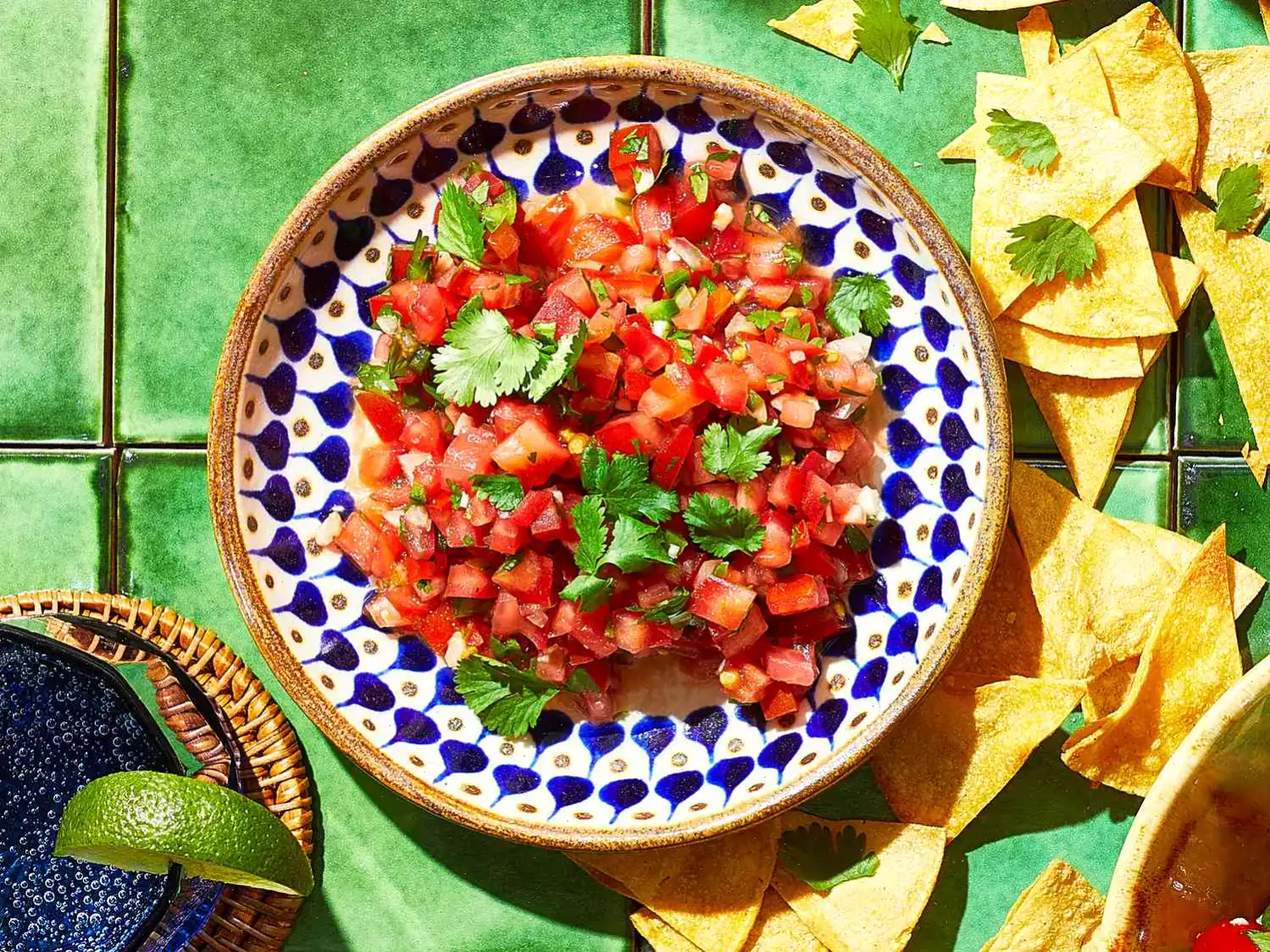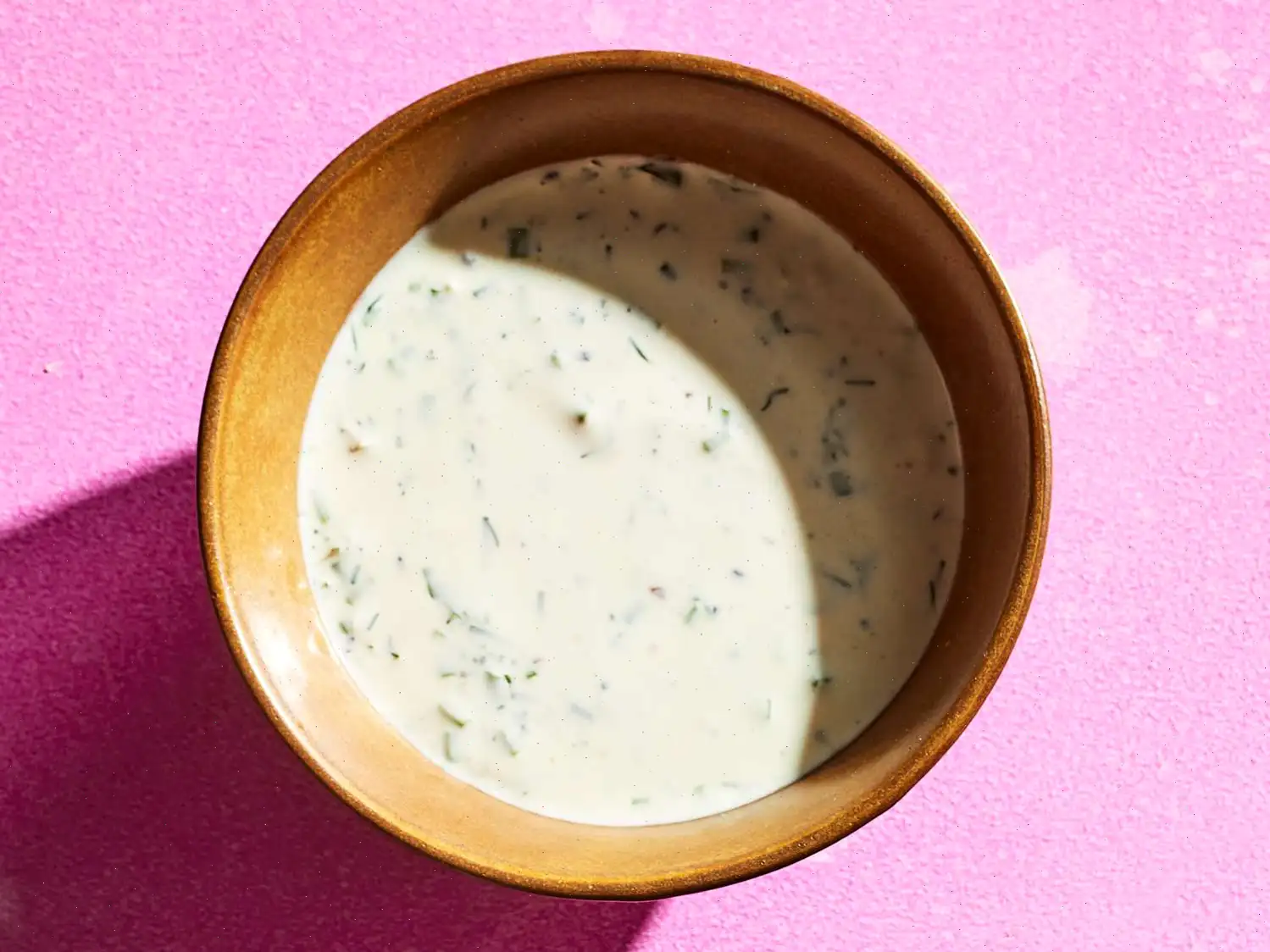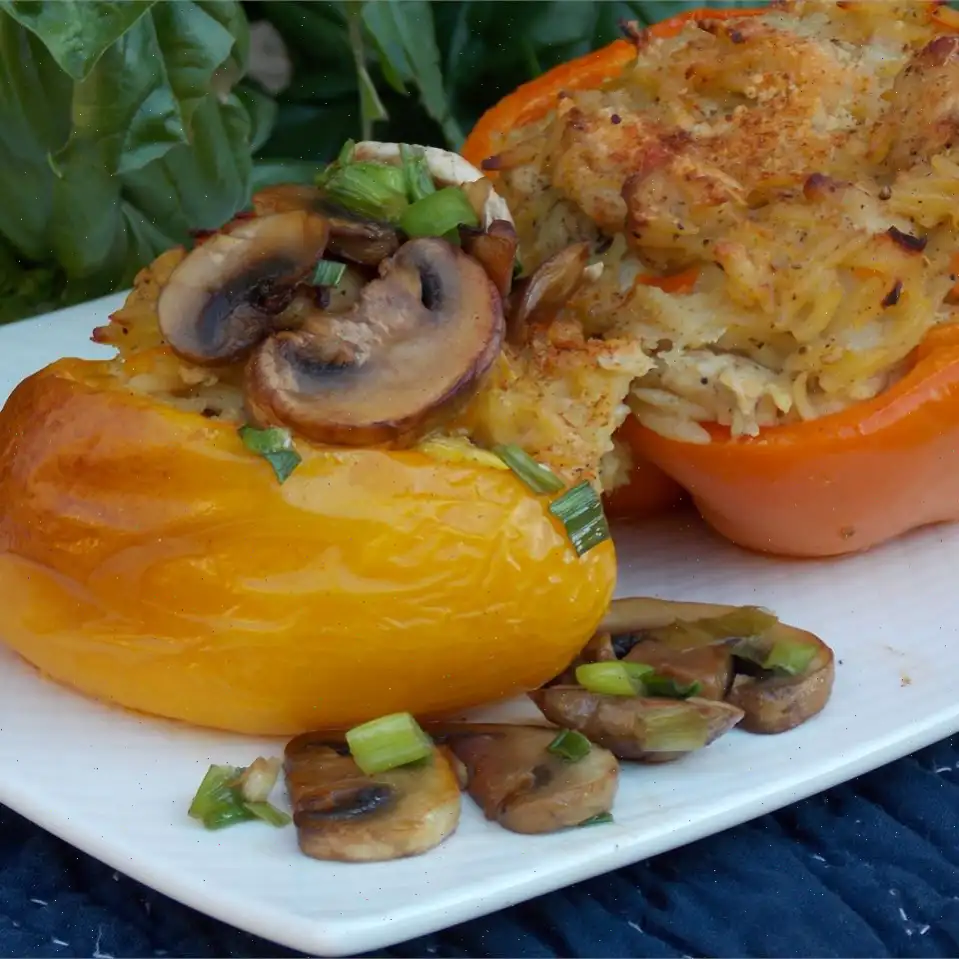
Watermelon-Serrano Salsa Recipe
Ingredients
This recipe yields 4 servings.
- 1 cup chopped Roma tomatoes
- 1 cup diced watermelon
- 1/4 cup diced red onion
- 1/4 cup lime juice
- 1 tablespoon chopped fresh cilantro
- 2 teaspoons minced red serrano pepper
- 1/8 teaspoon salt
- 1/8 teaspoon freshly ground black pepper
Directions
- In a bowl, stir together chopped Roma tomatoes, diced watermelon, red onion, lime juice, cilantro, serrano pepper, salt, and black pepper.
- Serve immediately or cover and chill for up to 2 hours before serving.
Cooks Note
Fruit salsa is best enjoyed within 2 hours of preparation as the fruit releases water, thinning the salsa over time. If you're preparing it ahead, wait to add the salt until just before serving.
Nutrition Facts (per serving)
| Calories | 32 |
| Total Fat | 0g |
| Saturated Fat | 0g |
| Cholesterol | 0mg |
| Sodium | 68mg |
| Total Carbohydrate | 8g |
| Dietary Fiber | 1g |
| Total Sugars | 5g |
| Protein | 1g |
| Vitamin C | 17mg |
| Calcium | 14mg |
| Iron | 0mg |
| Potassium | 224mg |
* Percent Daily Values are based on a 2,000 calorie diet. Your daily values may be higher or lower depending on your calorie needs.
** Nutrient information is based on available data and may vary depending on ingredient specifics.
If you are following a medically restrictive diet, please consult your doctor or registered dietitian before preparing this recipe for personal consumption.

Dip and dollop with this sweet and spicy watermelon-serrano salsa. Try this fruit salsa with chips or served over grilled fish.
History of Watermelon-Serrano Salsa
Watermelon-Serrano Salsa is a modern take on the traditional Mexican salsas, which have been a part of Mexican cuisine for centuries. Salsas typically combine fresh vegetables, fruits, and hot peppers, offering a balance of flavors that can range from sweet to spicy. The incorporation of watermelon in salsa, however, is a relatively recent innovation. Watermelon, known for its sweet, refreshing taste, pairs perfectly with the fiery kick of serrano peppers, creating an intriguing contrast. This fusion reflects the evolving nature of Mexican cuisine, where local and seasonal ingredients are used in creative ways to craft fresh, vibrant dishes.
Regional Variations
Though watermelon salsa can be found in various parts of Mexico, it is especially popular in the coastal regions, where fresh fruits are abundant, and the tropical climate enhances the use of ingredients like watermelon. The serrano pepper is widely used throughout Mexico, but its prominence in this salsa highlights the use of regional peppers, each bringing a distinct level of heat and flavor. The salsa's inclusion of cilantro and lime juice further ties it to traditional Mexican flavors, commonly found in dishes such as tacos, grilled meats, and seafood.
What Sets It Apart
Watermelon-Serrano Salsa stands apart from other salsas due to its combination of sweet, tangy, and spicy elements. Unlike more common tomato-based salsas, which rely on a savory base, this salsa uses watermelon, a fruit that not only adds sweetness but also offers a refreshing juiciness. The serrano pepper, known for its bright heat, contrasts with the coolness of the watermelon, creating a unique balance of flavors that is perfect for summer gatherings. Other fruit salsas, like mango or pineapple, typically lean toward a sweeter profile, but watermelon adds a subtle, mellow sweetness that enhances rather than overpowers the heat of the peppers.
Where Its Typically Served
This vibrant salsa is often served as a refreshing dip at summer barbecues, alongside crispy tortilla chips, or as a topping for grilled meats, especially fish and chicken. In coastal Mexican cuisine, it pairs beautifully with seafood like grilled shrimp or fish tacos. Watermelon-Serrano Salsa is also a great accompaniment to spicy dishes, as it helps to balance out the heat while adding a burst of refreshing flavor. In addition, it can be a fun twist on classic salsa when served at parties or as an appetizer before a larger meal.
Interesting Facts
- The combination of watermelon and chili peppers is not as unusual as it seems. In Mexico, fruits like watermelon, pineapple, and mango are often paired with chili powder and lime for a sweet, spicy snack called "tamarindo con chile." This reflects the broader trend of pairing sweet fruits with spicy seasonings in Latin American cuisine.
- Watermelon is not only delicious but also packed with water, making it a hydrating fruit perfect for warm weather. It's also a good source of vitamins A and C, both of which support skin health and the immune system.
- Serrano peppers, though small, pack a punch in terms of heat. These peppers can range from mild to moderately hot, but their flavor is bright and tangy, which is why they are a staple in fresh salsas.
- Fruit salsas like this one have gained popularity in recent years due to their versatility. They can be served with a wide range of dishes, from grilled meats to tacos, and they provide a healthy, refreshing alternative to heavier condiments.








